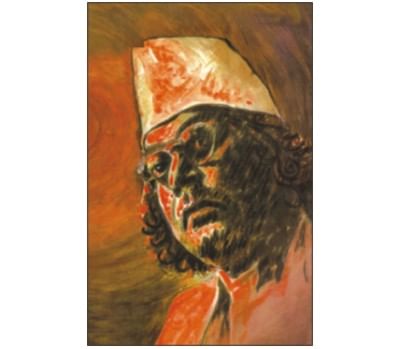Bridging home and the world

Compared to Rabindranath or other pioneering poets/lyricists/writers of his time, Kazi Nazrul Islam's travel credentials would not be considered that impressive. The furthest he went was Karachi, where he was posted after joining the 49 Bengal Regiment in 1917. This experience, however, provided him with an exposure to other cultures and languages, an exposure that would have a major impact on his poetic style. During his time in the army, Nazrul learnt Farsi (Persian). Son of an imam, Nazrul's introduction to Arabic happened at an early age. As an adolescent he joined a leto group and developed a skill in composing poems and songs on short notice. Through his association with the leto group, he also began learning about the Hindu Puranas.
Combined, these experiences helped Nazrul devise a vocabulary and subjects unheard of in Bangla literature. His poems and songs became a melting pot of Hindu and Muslim traditions. He used Sanskrit and Arabic words as effortlessly as he did conventional and unfamiliar Bangla ones. His works are marked with Persian as well as Hindu archetypes.
Consider the song "Bulbuli Neerob Nargis Bon-e". Bulbuli (nightingale) mute in a garden of nargis or narcissus (commonly known as daffodils) is an image alien to the average Bengali. But the image becomes more profound as Nazrul delves deeper.
"Shiraz-er nowruz-e Phalgun maash-e, jeno taar priyar shomadhir paashey..." Shiraz (in Iran) is known as the city of poets, wine, nightingales and flowers. Shiraz also happens to be the birthplace of the legendary poet and mystic Hafiz whose works had a major influence on Nazrul. Nowruz (literally meaning "new day") is a major Iranian celebration, marking the first day of spring and the beginning of the Persian year. Phalgun appropriately links the imagery to the deshi psyche.
Again, a Farsi reference, "Saaqir sharaab-er pyalar porey", followed up with Bengali elements, "Shakorun asrur bel phool jhorey".
Through the song "Shaon Ashilo Phirey", Nazrul introduces a North Indian folk genre, Kajari, to Bengali music enthusiasts. Kajari has its roots in Uttar Pradesh and highlights the season of monsoon. Mirzapur in eastern Uttar Pradesh is considered to be the real home of the genre. As a legend goes in Mirzapur, a woman named 'Kajali' was separated from her beloved. Monsoon arrived and solitude became unbearable; she started crying at the feet of a goddess and these wailings subsequently took the form of Kajari. Case in point: "Shaon ashilo phirey, shey phirey elo na/ Borosha phuraye gelo, asha tobu gelo na..."
In "Aaji Mon-e Mon-e Lagey Hori", Nazrul adapted the North Indian semi-classical genre Hori. The song incorporates unmistakable references to Braj culture wrapped in the identity of Bengali romantic senses. Sample: "Rang-er ujaan choley, kalo Jamunar jol-e/ Abir ranga holo mayur mayuri/ Bon-e bon-e lagey hori..."
Nazrul's "Dwipantar-er Bandi" features a poetic depiction of the infamous "Kalapani" (literally "black water", a term for exile) or the Andaman Cellular Jail. The prison was known to house many notable activists during the anti-Raj movement. The dismal conditions and the inhuman torture (fortunately for Nazrul, he was not exiled there) are epitomised: "Shatodal jetha shatodha bhinno, shastro panir astro ghaye/ Jantri jekhaney shantri boshaye, beenar tantri katichhey haye..."
Allusions to places where he had never been, depiction of legends he had never witnessed and incidents he might have never experienced -- examples abound. Nazrul truly utilised his poetic license, perhaps with more finesse than his contemporaries. The result: a mystical bridge between the familiar and the unfamiliar, home and the world.

 For all latest news, follow The Daily Star's Google News channel.
For all latest news, follow The Daily Star's Google News channel. 



Comments